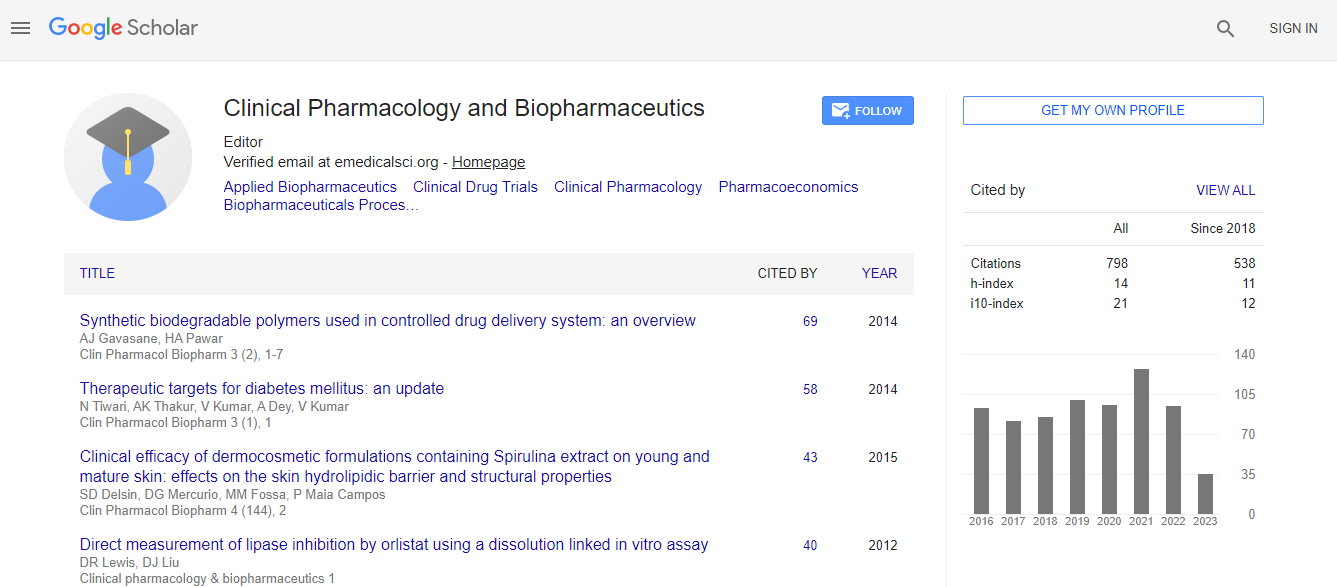Engineering Exosomes for Precision Medicine: Novel Approaches to Improve Drug Encapsulation and Release Profiles
*Corresponding Author: Hani Nasser Muzzalupo, Advanced Multifunctional Materials Laboratory, Department of Chemistry, Egypt, Email: haninasser34@gmail.comReceived Date: Nov 01, 2024 / Published Date: Nov 29, 2024
Citation: Muzzalupo HN (2024) Engineering Exosomes for Precision Medicine: Novel Approaches to Improve Drug Encapsulation and Release Profiles Clin Pharmacol Biopharm, 13: 515.
Copyright: © 2024 Muzzalupo HN. This is an open-access article distributed under the terms of the Creative Commons Attribution License, which permits unrestricted use, distribution, and reproduction in any medium, provided the original author and source are credited.
Abstract
Exosomes, naturally occurring extracellular vesicles, have garnered significant attention as potential delivery systems for precision medicine due to their ability to transport bioactive molecules while maintaining biocompatibility and cell-specific targeting. Despite their promising applications, challenges remain in optimizing exosome drug encapsulation and release profiles to ensure effective therapeutic outcomes. This review focuses on novel strategies to engineer exosomes for improved drug delivery, including the enhancement of encapsulation efficiency, the development of controlled release systems, and the modification of exosome surfaces to facilitate targeted drug delivery. The integration of these approaches has the potential to address the limitations of conventional drug delivery methods, offering enhanced stability, precision, and therapeutic efficacy. By advancing exosome engineering techniques, researchers are moving closer to the realization of personalized, effective treatments for a range of diseases, including cancer, neurological disorders, and autoimmune conditions.

 Spanish
Spanish  Chinese
Chinese  Russian
Russian  German
German  French
French  Japanese
Japanese  Portuguese
Portuguese  Hindi
Hindi 
